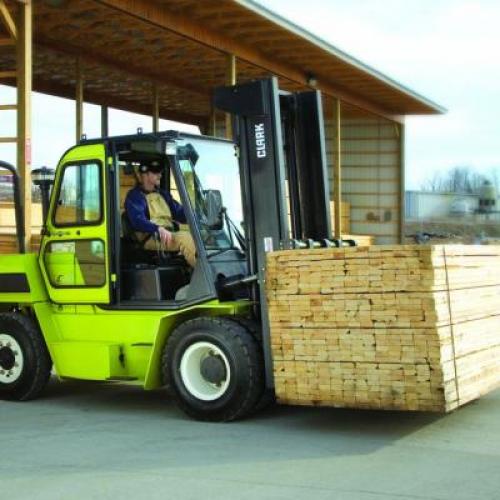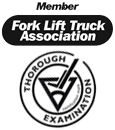Forklifts are one of those vehicles that for some reason hold a lot of mystery, such as, why do they have rear-wheel steering, how much can they actually lift, do they need MOTs and do you need a license to drive one.
To dispel some of that mystery, in this short article, we’ve put together a list of 5 of the most common questions people ask about forklifts and forklift operation, and given a brief answer to each.
The concept of a forklift began in the mid-nineteenth century, in the form of manually-controlled hoists. Although quite crude in their design, these early hoists sped up productivity and reduced the need for excessive manpower.
Then, in 1906, the Pennsylvania Railroad started using a battery-powered truck to shift luggage, and although not exactly a forklift, this design spurred Clark (an early forklift manufacturer) to come up with the forerunner of the modern forklift in 1917.
No, a forklift doesn’t require an MOT in the same way a car or van requires an MOT, but it does require an annual Thorough Examination, which is more thorough than the type of MOT you’d have for other road vehicles.
A Thorough Examination of a forklift, carried out by a qualified inspector, will include inspecting things such as:
Like any other vehicle, the performance, or in this case the lifting capability, comes down to the specifications of the vehicle itself. The main factor determining how much a forklift can lift, is its weight.
The heavier a forklift is, the heavier its counterbalance, and therefore its lifting capability. The largest forklift ever built was called Colossus, and weighed a massive 220,000 lbs, with a lifting capability of 70 tons.
The two main reasons forklifts have rear-wheel steering are:
It helps with precision steering – Forklifts need to be able to negotiate extremely narrow and tight routes, and rear-wheel steering provides more precision and stability to achieve this, especially on sharp bends.
Because it lifts at the front – Because a forklift lifts at the front, front-wheel steering would be ineffective and impractical, as the steering mechanism would bear all the weight.
No, you don’t need a license to drive a forklift, but if you are going to operate one, it is essential you have the right training to operate it safely.
That said, certain criteria have to be met before you operate a forklift. These include:
Based near Bedfordshire, Beds & Bucks Forktrucks Ltd. is one of the UK's leading suppliers of new and used forklifts, including LPG forklifts and electric forklifts, as well as specialists in forklift servicing, repairs and refurbishments. Contact us today to speak to one of our team of experts.


